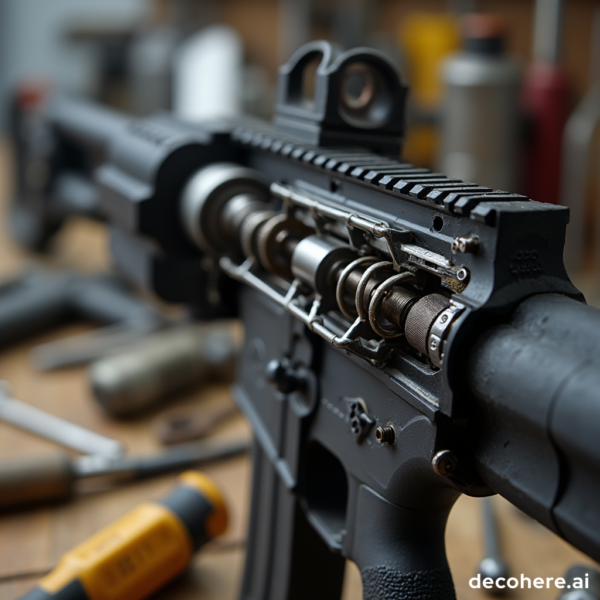Automotive Paint Curing Times: What to Expect and How to Get the Best Results
Understanding Automotive Paint Curing: Why Timing Matters
The process of painting a vehicle involves more than just applying a fresh coat of color. Curing time is a critical factor that directly impacts the durability, finish, and longevity of your vehicle’s paint. Understanding how long automotive paint takes to cure, the factors that influence it, and the steps you can take to protect your investment ensures your car maintains its best appearance for years to come.
What Is the Difference Between Drying and Curing?
It’s common to confuse
drying
and
curing
when discussing automotive paint.
Drying
refers to when the paint is no longer tacky to the touch, often occurring within a few hours.
Curing
, on the other hand, is the chemical process where paint hardens fully and achieves maximum durability. This can take much longer-ranging from days to several weeks depending on the paint type and environmental conditions.
[5]
How Long Does Automotive Paint Take to Cure?
The curing time for automotive paint depends on several factors, including the type of paint used, environmental conditions, and number of layers applied. Here’s a breakdown of average curing times by paint type:
- Acrylic Paint: Typically dries within 6 to 12 hours at about 20°C (68°F) but may take up to 7 days to fully cure. [2] Some sources suggest a full cure in 24 to 48 hours, but waiting a week ensures optimal hardness. [1]
- Enamel Paint: Dries in 8 to 24 hours, with full curing potentially taking up to 10 days. [2] In some cases, the curing process may extend to several weeks, especially in cooler or more humid environments. [1]
- Urethane Paint: Dries faster, typically within 12 to 24 hours, but may take 2 to 3 weeks to fully cure. [1] This type of paint is favored for its durability and UV resistance.
- Alkyd Paint: Dries in about 24 hours, with final hardening taking up to two weeks. [2]
For newly painted cars, many experts recommend waiting at least 60 to 90 days before applying wax or sealant to allow the paint to fully cure. [4]

Source: pinterest.com
Key Factors That Affect Curing Time
The actual time needed for paint to cure can be influenced by multiple variables:

Source: etsy.com
- Paint Type and Brand: Different formulations have unique curing requirements. Always check the manufacturer’s guidelines.
- Number and Thickness of Coats: Thicker layers and multiple coats extend curing time. Applying thin, even coats helps speed up the process. [5]
- Temperature and Humidity: Warmer, drier conditions promote faster curing, while cold or humid environments can slow the process. [2]
- Ventilation: Proper airflow helps solvents evaporate more quickly, aiding both drying and curing.
- Use of Curing Lamps or Booths: Professional facilities may use infrared lamps or heat booths to accelerate curing, especially for urethane finishes.
Step-by-Step Guidance: Protecting Your New Paint Job
To maximize the durability and appearance of your car’s new finish, follow these steps:
- Allow Proper Curing Time: Avoid driving, washing, or exposing the vehicle to harsh conditions for the full recommended curing period. For most paints, this means waiting at least 7 days before any washing, and up to 2-3 weeks before waxing. [1]
- Store in a Clean, Dry Environment: Keep your car in a garage or covered area to minimize dust and moisture exposure while the paint cures. [2]
- Monitor Environmental Conditions: Use a thermometer and hygrometer to ensure optimal temperature and humidity. If in doubt, consult your auto body shop for advice on best curing practices in your area.
- Inspect for Defects: After the recommended cure time, inspect the surface for imperfections. If issues are found-such as orange peel, runs, or dull areas-consult a professional for corrective solutions.
- Wax and Seal Only After Full Cure: Applying protection too early can trap solvents and damage the finish. Wait at least 60-90 days for full cure, especially for modern two-stage paints. [4]
Examples and Real-World Scenarios
Consider a car repainted with acrylic enamel : after 24 to 48 hours, the paint may feel dry, but full curing can take a week or more. Attempting to wash or wax the car before this time can lead to swirl marks, water spots, or even softening of the paint. [1]
For a urethane finish in a climate-controlled booth, you might achieve full cure in two weeks, but if the car is painted in a standard garage with fluctuating humidity, curing could take even longer. [1]
Alternative Approaches to Speed Up Curing
If you need your vehicle ready sooner, consider these alternatives:
- Choose Faster-Curing Paints: Some modern urethane or acrylic formulas are designed for rapid curing, especially when used in conjunction with professional curing lamps.
- Use Infrared or Heat Lamps: Professional body shops may use these to safely accelerate the curing process. [5]
- Apply Thin, Even Coats: This reduces the amount of solvent that must evaporate and allows for faster overall curing.
- Work with Certified Professionals: Experienced technicians can recommend the best paint and curing options to suit your timeline and quality requirements.
Potential Challenges and Solutions
Challenges commonly encountered during the curing process include:
- Unexpected Weather Changes: Sudden drops in temperature or spikes in humidity can lengthen curing times. If possible, delay painting until conditions stabilize, or use a climate-controlled facility.
- Dust and Contaminants: Particles can settle on uncured paint, marring the finish. Limit vehicle movement and keep the workspace clean.
- Impatience: Rushing the process by washing, waxing, or driving the car too soon can permanently damage the paint. Always follow recommended timelines for best results.
How to Find Reliable Automotive Paint Services
If you are considering a professional repaint or want to ensure your new paint job is properly cared for:
- Search for certified auto body shops in your area using terms like “certified auto paint technician” or “ICAR Gold Class shop.”
- Contact local shops and ask about their curing process, facilities, and aftercare recommendations.
- Inquire about the types of paint they use and their recommended curing times for each.
- Visit the manufacturer’s website for your paint brand for detailed product information and curing guidelines.
If you need further guidance, consider reaching out to your car manufacturer’s customer service line or visiting their official website for recommendations on approved repair facilities and care instructions.
Summary and Key Takeaways
Automotive paint curing time is essential for achieving a durable, high-gloss finish that stands up to daily wear. The process can take anywhere from a few days to several weeks, depending on the paint type, environmental conditions, and care taken during and after application. Always follow manufacturer and professional guidelines, avoid rushing the process, and seek out qualified experts when in doubt.
References
- [1] Bliss Car Wash (2024). How Long Should Car Paint Dry Before Washing?
- [2] T-WEKO (2024). Drying after painting: How long does the paint dry on the car?
- [3] Status Automotive (2023). How Long Does Car Paint Take To Dry?
- [4] Meguiar’s Online Forums (2010). The Real Time it Takes the Paint to Cure.
- [5] Accudraft Paint Booths (2022). Dry Time vs Cure Time: Paint Booth 101.



